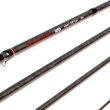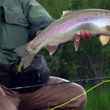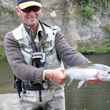Rewind 82 years. It’s 1932.
Ernest Hemingway, with A Farewell to Arms looming as suppressed musings in his mind’s periphery, is perched on a barstool in Sloppy Joe’s Bar sipping a whiskey and coke, conversing with his fishing-minded acquaintances, the salty, blue Atlantic sky beaming in through the open doors. Outside, crystalline saltwater kisses the sandy beaches of Key West; and like so, rumors of elusive, uncatchable, finned, marine beasts filter west from the Bahaman Islands. There is a catalyst in the air, a catalyst for the outbreak of the gilded age of big-game sport fishing, and for a self-made, inventive, American success story.
Frank O’Brien, an industrious man doing his best to make money to support his family during the height of the Great Depression, is selling cutlery on the streets. A fisherman at heart, O’Brien makes the acquaintance of Jack Reynolds, local and owner of Florida Fishing Tackle, a company invested in the sale of small hardware items — hooks, lines, and sinkers. O’Brien partners with Reynolds as a salesman — his trade and talent — and becomes imbued in the saltwater fishing industry.





























